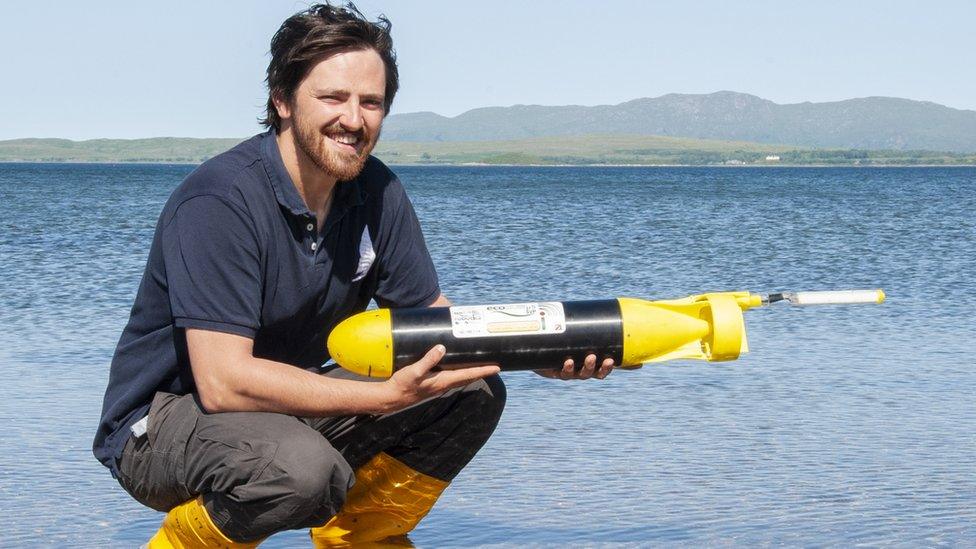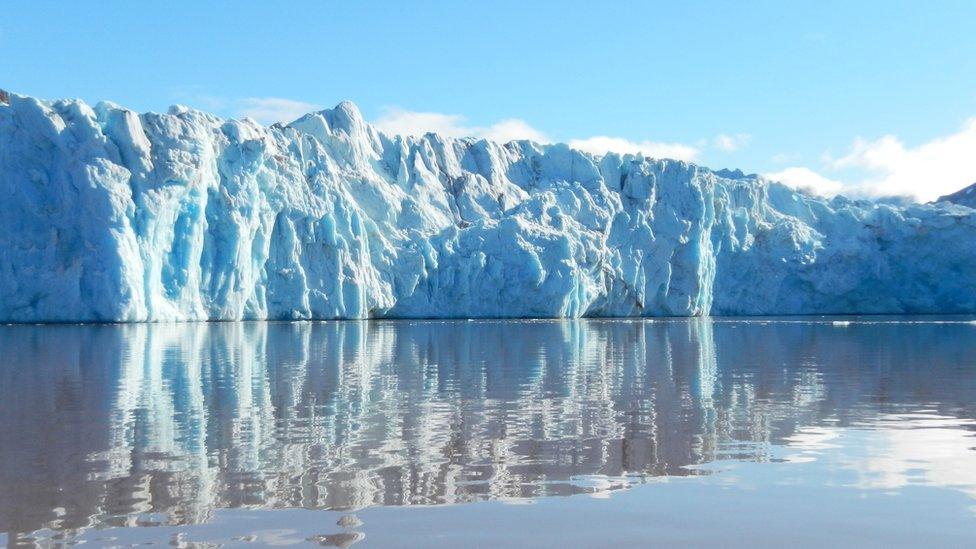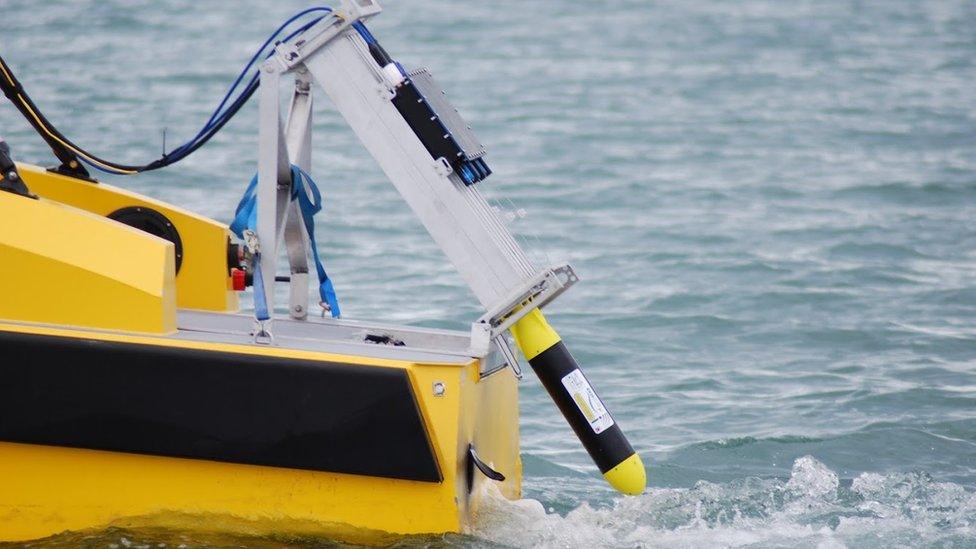Underwater robot to take on 'dangerous' Arctic mission
- Published

PHD student James Coogan will be deploying the ecoSUB during the mission
A team of scientists is heading to the Arctic on a research mission deemed too dangerous for humans to go alone.
The team will use an underwater robotic vehicle (AUV) to help them understand the extent of melting from glaciers.
The Scottish Association for Marine Science (SAMS) in Oban, will send the AUV to one of the most hostile environments on the planet.
The robot will gather data and take measurements such as temperature and salinity from as deep as 100m (330ft).
It will help scientists learn more about the effect of meltwater on a process known as "calving", which can cause large pieces of ice to break off the glacier edge.
Simply too dangerous
Weighing less than 4kg (9lbs) and around one metre (3ft) in length, the ecoSUB will gather data from below Kronebreen glacier on Svalbard.
Leading the expedition is Professor Mark Inall, who says it is too dangerous for boats to go towards glaciers at this time of year. This is where the ecoSUB will be utilised, working at the front line.
He said: "Not only is there a risk of falling ice, but large-scale calving causes huge waves, so it is a dangerous environment. What we're looking at is the way in which the heat in the ocean is melting the ice sheets, in particular where the ocean and ice sheets meet.
"Given the importance of Arctic glacial ice melt in terms of climate change and sea level rise, the interaction between melt water and sea water beneath glaciers is hugely understudied.

Scientists will examine melting from Arctic glaciers
"We have satellite images and models that help to predict the extent of ice loss but it is extremely important to 'ground-truth' these predictions by investigating conditions in the field."
SAMS will deploy a second larger AUV further from the glacier to take more detailed measurements of the glaciers while a drone will capture aerial images that will help build a 3D map.
James Coogan, a PDH student at SAMS will be operating the ecoSUB. He says much of the current understanding of sub-glacial discharge has been based on mathematic models.
He added: "We want to get direct measurements of these plumes. How much fresh water is coming out of the glacier? How much of an effect is this having on the fjord water? How much heat and salt is in the water flowing in?"

The underwater robot will explore hostile areas that would be too risky for humans
The readings from the ecoSUB will give the researchers a better understanding of the sub-glacial discharge, where melt water flows down through the glacier and out into the ocean.
The water is fresher than the sea water, so it can start to rise in the water column, creating a plume that pulls in warmer Atlantic water. Rising water can create a sandpaper effect against the glacier, causing chunks of ice to fall into the sea.
James added: "These are questions we can answer to an extent with models but we need to check these conclusions with real data from the field. That hasn't been feasible, until now."